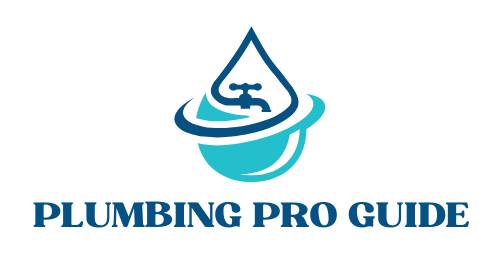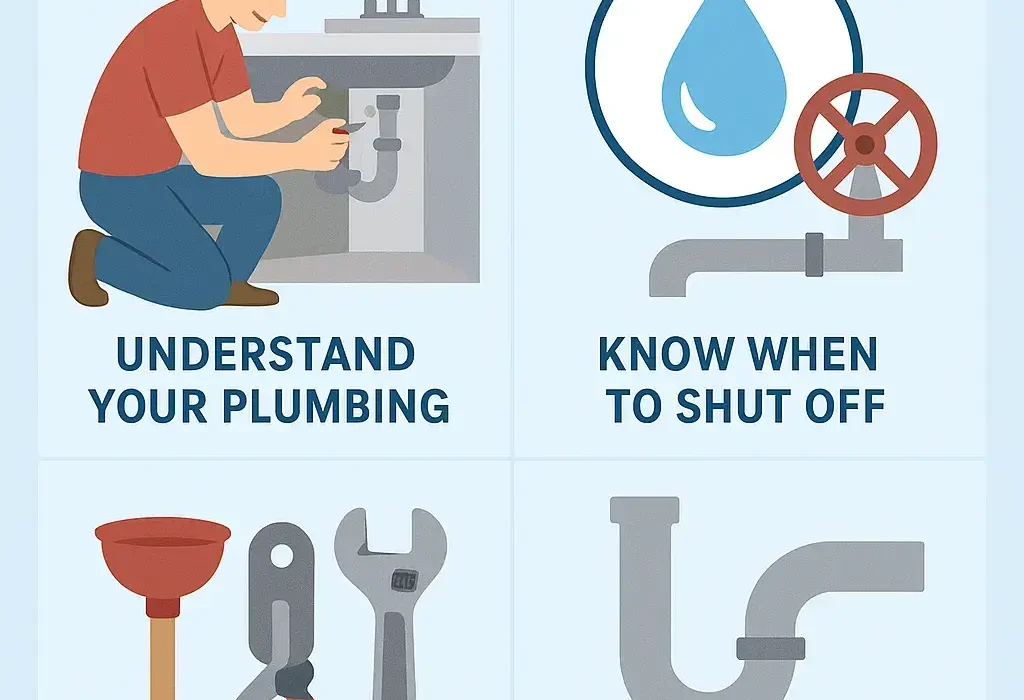Plumbing tips for beginners can make a huge difference when learning how to care for your home. Whether you’ve just bought your first home or you simply want to become more confident about handling small plumbing issues, understanding the basics of your plumbing system is essential. Good plumbing knowledge can save you hundreds of dollars on repairs, prevent water damage, and help you maintain a healthy, efficient home.
This complete beginner’s guide will walk you through how plumbing works, key tools you should have, common problems and solutions, and maintenance tips specifically for homes in the United States, where systems and standards differ from many other countries, making these plumbing tips for beginners especially useful for homeowners.
For more such plumbing info, visit our plumbing guide.
Understanding Your Home’s Plumbing System
Learning how your home’s water and drainage work is one of the most valuable plumbing tips for beginners. Your plumbing system is made up of two main subsystems:
1.1 Water Supply System
-
- Brings fresh water into your home under pressure.
-
- Water enters through the main water line, usually connected to a city supply or private well.
-
- It passes through a meter, then splits into cold and hot water lines (hot water is supplied by your water heater).
Typical pressure in U.S. homes:
-
- 40 to 80 PSI (pounds per square inch).
-
- Too low = weak showers.
-
- Too high = pipe damage risk.
1.2 Drain-Waste-Vent (DWV) System
-
- Removes used water and waste through drain pipes.
-
- Gravity pulls wastewater down through the drains into the main sewer line or a septic tank.
-
- Vent pipes allow air in so drains flow smoothly and odors don’t back up.
2. Know Where to Shut Off Your Water
Before doing any plumbing repair, knowing how to stop water flow is one of the most important plumbing tips for beginners.
-
- Main Shut-Off Valve:
Usually located where the main water line enters the house — in the basement, garage, or utility room.
Tip: Turn the valve clockwise (“righty-tighty”) to shut off water to the whole house.
- Main Shut-Off Valve:
-
- Fixture Valves:
Found under sinks and behind toilets.
These allow you to shut off water to a specific fixture without cutting the supply to the entire home.
- Fixture Valves:
3. Essential Plumbing Tools for Beginners
| Tool | Purpose |
|---|---|
| Plunger | Clears clogged toilets or drains |
| Adjustable wrench | Tightens or loosens nuts and fittings |
| Pipe wrench | For larger metal pipes |
| Basin wrench | Reaches hard-to-access nuts under sinks |
| Plumber’s tape (Teflon tape) | Prevents leaks in threaded pipe joints |
| Pipe cutter or hacksaw | Cuts through pipes cleanly |
| Bucket & towels | Always keep nearby for spills |
4. Common Plumbing Problems & DIY Fixes
4.1 Clogged Drains
-
- Avoid using harsh chemical drain cleaners — they can corrode pipes.
-
- Instead, try:
-
- Boiling water for grease clogs.
-
- Baking soda + vinegar for natural cleaning.
-
- Plunger or drain snake for stubborn clogs.
-
- Instead, try:
4.2 Leaky Faucets
-
- Usually caused by worn washers or O-rings.
-
- Turn off the fixture valve, disassemble the handle, replace the washer, and reassemble.
4.3 Running Toilet
-
- Often due to a faulty flapper valve or float.
-
- Replace the flapper ($5–$10) and check if the float height is correct.
4.4 Low Water Pressure
-
- Check if it’s isolated (one fixture) or whole house.
-
- For one fixture: clean the aerator.
-
- For all: check pressure regulator or contact your city’s water department.
4.5 Frozen Pipes (Common in Northern U.S. States)
-
- Keep cabinet doors open under sinks in winter.
-
- Let faucets drip slightly to prevent freezing.
-
- If frozen, turn off water and gently thaw with a hair dryer, never use open flames.
Read our guide on suitable pipes for cold weather in the US to learn more.
5.Maintenance Plumbing Tips For Beginners
-
- Inspect for leaks monthly — especially under sinks and around toilets.
- Clean showerheads by soaking them in vinegar to remove mineral deposits.
- Flush your water heater annually to remove sediment buildup and extend its life.
- Use drain strainers to prevent hair and food particles from clogging pipes.
- Avoid pouring grease, oil, or coffee grounds down drains.
- Check water pressure annually with a pressure gauge — maintain between 40–60 PSI.
6. How U.S. Plumbing Differs from Other Countries
| Aspect | USA | Other Countries |
|---|---|---|
| Pipe Materials | PEX, PVC, and Copper are most common | In older homes abroad, galvanized steel or lead pipes are still found |
| Water Heater Type | Tank or tankless; usually separate for each home | Often shared or smaller units in apartments |
| Water Pressure | High and consistent (regulated by city supply) | It can vary widely depending on the region |
| Building Codes | Strictly regulated (UPC or IPC standards) | May vary by city or be loosely enforced |
| Drain Systems | Designed with full venting and traps |
Some older systems lack proper venting (odor problems common) |
Plumbing doesn’t have to be intimidating. With a little knowledge and a few reliable tools, you can handle most small issues confidently. Following plumbing tips for beginners helps save money and avoid emergency calls, but knowing your limits and when to call a licensed plumber is equally important.
Frequently Asked Questions
1. What are the most common plumbing issues beginners face?
2. How often should I inspect my home’s plumbing system?
It’s a good idea to check visible pipes, faucets, and under-sink connections once a month. Do a full home inspection every six months to catch leaks early.
3. What should I never put down the drain?
Avoid pouring grease, oil, coffee grounds, hair, paper towels, and wipes — they can cause serious clogs over time.
4. How do I know if I have a water leak?
Look for signs like damp walls, mold, unusually high water bills, or the sound of running water when everything is off. You can also check your water meter for movement when no water is in use.
5. What is the ideal water pressure for U.S. homes?
Normal household water pressure should be between 40 and 60 PSI. Pressures higher than 80 PSI can damage your plumbing and appliances.
6. Can vinegar and baking soda really unclog drains?
Yes, for minor buildup or odors. Pour ½ cup of baking soda, followed by 1 cup of vinegar, wait 15 minutes, then flush with hot water or use a ready-made solution available in the market. These are great plumbing tips for beginners to unclog any drain in the house.
7. When should I call a professional plumber instead of fixing it myself?
After reading the plumbing tips for beginners guide by Plumbing Pro Guide, you will be able to resolve most problems, but if you have burst pipes, sewer backups, water heater problems, or gas line issues, always call a licensed plumber.
8. How often should I flush my water heater?
At least once a year, to remove sediment and keep it running efficiently.
9. What are the best pipes for U.S. homes?
PEX and copper are the most reliable and commonly used in modern American homes. PVC is used mainly for drainag


